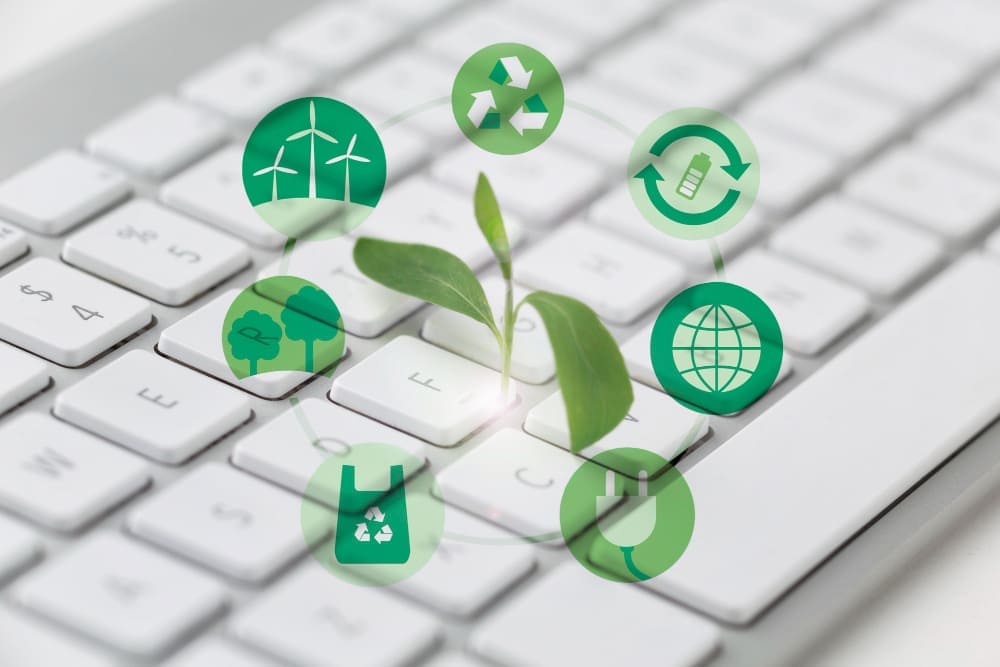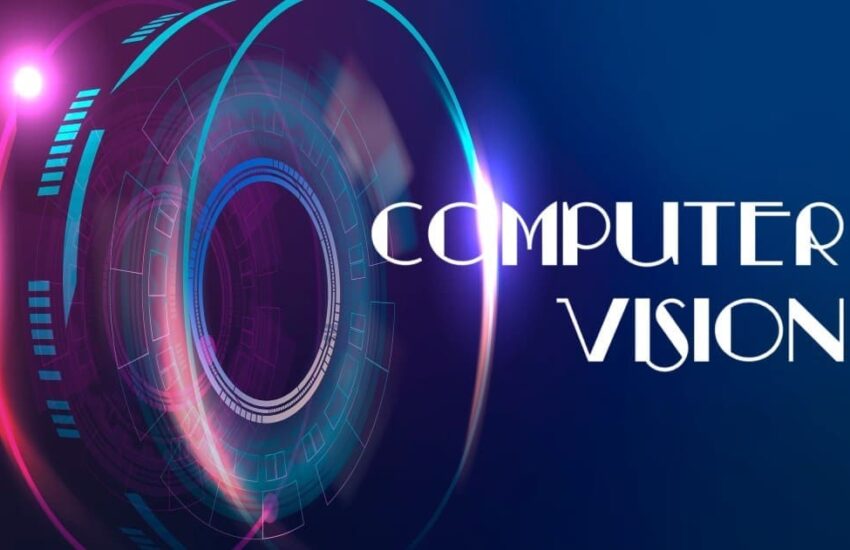
Overview:
In today’s digital age, green computing has emerged as a critical response to the environmental impacts of technology. This field focuses on reducing energy consumption, minimizing electronic waste, and adopting sustainable practices throughout the lifecycle of computing devices. Key aspects include optimizing energy efficiency in hardware and data centers, leveraging renewable energy sources, and promoting eco-friendly manufacturing and disposal methods. Recent trends highlight advancements in virtualization, cloud computing, and energy-efficient algorithms, which further contribute to reducing carbon footprints and operational costs.
Driving the adoption of green computing are concerns over environmental sustainability, cost savings from reduced energy use, and regulatory pressures to comply with environmental standards such as RoHS and WEEE directives. Despite these benefits, organizations face challenges such as initial investment costs, technological limitations, and navigating complex regulatory landscapes. By addressing these challenges and embracing sustainable practices, businesses can enhance their reputation, attract environmentally conscious customers, and play a pivotal role in shaping a greener future for computing technologies globally.
Contents:
- What is Green Computing
- Key aspects of Green Computing
- Key Technology Trends in Green Computing
- Major Drivers Influencing the Adoption of Green Computing
- Key Benefits of Green Computing
- Key Challenges with Green Computing
- The Regulatory Landscape of Green Computing in Top Economies
What is Green Computing:
Green computing, also known as green IT, refers to the environmentally responsible use of computers and related resources. Its goals are to reduce energy consumption, minimize waste, and promote sustainability throughout the lifecycle of computing devices.
Key aspects of Green Computing include:
1. Energy Efficiency
1.A Energy-Efficient Hardware:
Low-Power Components: Using energy-efficient processors, SSDs instead of HDDs, and LED monitors that consume less power.
Energy Star Compliance: Purchasing devices certified by Energy Star, which guarantees they meet energy efficiency guidelines set by the U.S. Environmental Protection Agency.
1.B Power Management Software:
Dynamic Voltage and Frequency Scaling (DVFS): Techniques that adjust the power and speed of processors based on current tasks to save energy.
Sleep Modes and Hibernation: Enabling power-saving modes when devices are inactive for certain periods.
1.C Renewable Energy:
Solar and Wind Energy: Using renewable energy sources to power data centers and office buildings, reducing reliance on fossil fuels.
2. Reduction of Hazardous Materials
2.A Material Substitution:
Lead-Free Solders: Using alternatives to lead in electronic components.
Biodegradable Materials: Developing components from biodegradable or recyclable materials.
2.B Governing Guidelines:
RoHS (Restriction of Hazardous Substances Directive): Complying with regulations that restrict the use of specific hazardous materials in electronics.
WEEE (Waste Electrical and Electronic Equipment Directive): Ensuring proper collection, recycling, and recovery of electronic waste.
3. Recycling and Disposal
3.A E-Waste Recycling Programs:
Manufacturer Take-Back Programs: Programs where manufacturers accept old equipment for recycling.
Certified E-Waste Recyclers: Using recyclers certified by organizations like e-Stewards or R2 (Responsible Recycling).
3.B Proper Disposal Practices:
Data Destruction: Securely wiping data before disposal to protect sensitive information.
Safe Handling of Batteries: Ensuring batteries are disposed of properly to prevent environmental contamination.
4. Virtualization and Cloud Computing
4.A Server Virtualization:
Consolidation: Running multiple virtual machines on a single physical server to increase utilization rates and reduce the number of physical servers needed.
Resource Allocation: Dynamically allocating resources to virtual machines based on demand to optimize energy use.
4.B Cloud Services:
Scalable Infrastructure: Using cloud services to scale computing resources up or down based on demand, reducing the need for always-on hardware.
Shared Resources: Sharing resources among multiple users to improve efficiency and reduce redundancy.
5. Sustainable Manufacturing
5.A Eco-Friendly Production Processes:
Lean Manufacturing: Reducing waste and improving efficiency in the production process.
Renewable Materials: Using recycled and renewable materials in the production of new devices.
5.B Supply Chain Management:
Sustainable Sourcing: Ensuring that materials are sourced from environmentally responsible suppliers.
Logistics Optimization: Reducing the carbon footprint of transportation and logistics.
6. Energy-Efficient Algorithms and Software
6.A Code Optimization:
Efficient Algorithms: Writing algorithms that require fewer computational resources.
Energy-Aware Programming: Developing software that minimizes energy consumption through optimized code and efficient use of hardware.
6.B Load Balancing:
Distributed Computing: Distributing workloads across multiple machines to ensure no single machine is overburdened, reducing overall energy use.
Demand Response: Adjusting computing tasks based on energy availability and pricing, such as running intensive tasks during off-peak hours.
7. Lifecycle Management
7.A Maintenance and Upgrades:
Regular Maintenance: Performing regular maintenance to keep devices running efficiently and extend their usable life.
Upgradable Components: Designing devices with components that can be easily upgraded instead of replacing the entire device.
7.B Reuse and Repurposing:
Donating Old Equipment: Donating used but functional equipment to schools, non-profits, or developing regions.
Repurposing Hardware: Finding new uses for old hardware, such as using an old server as a home media server.
Key Technology Trends in Green Computing:
1. Advanced Cooling Techniques:
Liquid Cooling: Utilizing liquids instead of air to dissipate heat from high-performance computing systems, significantly improving cooling efficiency.
Immersion Cooling: Submerging servers in non-conductive cooling fluids to reduce energy required for cooling.
Free Cooling: Using outside air and other natural cooling methods to reduce reliance on traditional air conditioning systems.
2. Green Cloud Computing:
Serverless Computing: Offering cloud execution models that dynamically allocate resources only when needed, thus optimizing energy use.
Edge Computing: Processing data closer to where it is generated to reduce the need for energy-intensive data transmissions to centralized data centers.
Carbon-Neutral Cloud Services: Cloud providers pledging to achieve carbon neutrality and offering options for carbon offsets to their customers.
3. Energy-Efficient Networking:
Optical Fiber Networks: Utilizing optical fibers for data transmission, which consume less power compared to traditional copper wires.
Energy-Aware Routing Protocols: Developing protocols that select network paths based on energy efficiency, not just performance metrics.
4. Green Software Engineering:
Energy-Efficient Algorithms: Designing algorithms that minimize computational resources and energy consumption.
Power-Aware Development Tools: Using tools that help developers measure and optimize the energy consumption of their applications.
5. Sustainable Manufacturing:
Eco-Friendly Materials: Using biodegradable and recyclable materials in the production of electronic devices.
3D Printing: Employing additive manufacturing techniques to reduce waste and improve energy efficiency in producing hardware components.
6. AI and Machine Learning for Sustainability:
Predictive Maintenance: Using AI to predict and prevent equipment failures, thereby reducing waste and extending the lifespan of hardware.
Energy Optimization: Applying machine learning algorithms to optimize energy use in data centers and other IT infrastructure.
7. Next-Generation Batteries and Power Supplies:
Solid-State Batteries: Developing batteries that are more efficient and have a longer lifecycle than traditional lithium-ion batteries.
Energy Harvesting: Incorporating technologies that capture and use ambient energy from the environment (e.g., solar, thermal, kinetic) to power devices.
8. Virtual and Augmented Reality:
Remote Work and Collaboration: Leveraging VR and AR to reduce the need for travel and physical meetings, thereby reducing carbon footprints.
9. Green Building Technologies for IT Facilities:
Smart Grids: Integrating IT facilities with smart grid technologies to optimize energy use and incorporate renewable energy sources.
Energy-Efficient Lighting: Implementing LED and smart lighting systems that adjust based on occupancy and natural light availability.
10. Blockchain for Sustainability:
Energy-Efficient Consensus Algorithms: Transitioning from energy-intensive proof-of-work (PoW) to more efficient consensus mechanisms like proof-of-stake (PoS).
Green Supply Chains: Using blockchain to ensure transparency and sustainability in the supply chains of electronic components and devices.
Major Drivers Influencing the Adoption of Green Computing:
1. Regulatory Compliance:
Environmental Regulations: Governments worldwide are implementing strict regulations to reduce carbon emissions and electronic waste, such as the European Union’s RoHS and WEEE directives.
Energy Efficiency Standards: Programs like Energy Star set standards for energy efficiency in electronics, pushing manufacturers to develop greener products.
2. Economic Incentives:
Cost Savings: Energy-efficient technologies reduce operational costs by lowering electricity consumption and cooling expenses.
Tax Benefits and Grants: Governments offer financial incentives, such as tax breaks and grants, for companies that invest in green technologies and practices.
3. Corporate Social Responsibility (CSR):
Brand Image and Reputation: Companies adopting green computing practices can enhance their brand image, demonstrating a commitment to sustainability and attracting environmentally conscious consumers.
Investor Pressure: Investors are increasingly considering environmental, social, and governance (ESG) factors when making investment decisions, driving companies to adopt green practices.
4. Technological Advancements:
Innovation in Green Technologies: Advances in renewable energy, energy-efficient hardware, and cooling technologies make it easier and more cost-effective to implement green computing solutions.
Data Analytics and AI: The use of AI and data analytics to optimize energy use and improve the efficiency of IT operations.
5. Consumer Demand:
Eco-Conscious Consumers: Increasing consumer awareness and demand for sustainable products push companies to adopt green computing practices.
Product Differentiation: Offering eco-friendly products can help companies differentiate themselves in a competitive market.
6. Resource Scarcity:
Finite Resources: The limited availability of certain raw materials used in electronics manufacturing drives the need for sustainable practices to conserve resources and find alternative materials.
Energy Constraints: Growing energy demands and the need to reduce dependence on non-renewable energy sources encourage the adoption of energy-efficient technologies.
7. Climate Change Mitigation:
Reducing Carbon Footprint: Companies are motivated to reduce their carbon footprint to mitigate the impacts of climate change, often aligning with international agreements like the Paris Agreement.
Sustainable Development Goals (SDGs): Aligning with global sustainability goals, such as the United Nations’ SDGs, encourages organizations to adopt green computing practices.
8. Competitive Advantage:
Market Leadership: Early adopters of green computing can position themselves as industry leaders in sustainability, gaining a competitive edge.
Employee Attraction and Retention: Companies with strong environmental practices can attract and retain employees who value sustainability.
9. Operational Efficiency:
Improved Performance: Energy-efficient and optimized IT systems often perform better and have longer lifespans, enhancing overall operational efficiency.
Reduction in E-Waste: Efficient recycling and disposal practices reduce electronic waste, contributing to a cleaner environment and reducing disposal costs.
10. Legal and Ethical Obligations:
Corporate Governance: Adherence to legal requirements and ethical standards necessitates the implementation of green practices.
Stakeholder Pressure: Pressure from stakeholders, including customers, employees, and advocacy groups, to adopt more sustainable practices.
Key Benefits of Green Computing:
1. Energy Efficiency:
One of the primary benefits is reduced energy consumption. Green computing promotes the use of energy-efficient hardware and software, which lowers electricity usage and operational costs.
2. Resource Conservation:
It emphasizes the efficient use of computing resources such as paper, ink, and electronic components. This reduces waste and promotes recycling and reuse of materials.
3. Eco-friendly Practices:
Green computing encourages businesses and individuals to adopt practices that minimize environmental impact, such as using renewable energy sources and reducing carbon emissions.
4. Cost Savings:
By reducing energy consumption and minimizing waste, organizations can save money on utility bills, waste disposal costs, and equipment purchases.
5. Extended Equipment Lifespan:
Proper management and maintenance practices under green computing principles can extend the lifespan of computing equipment. This reduces the frequency of replacements and associated environmental costs of manufacturing and disposal.
6. Regulatory Compliance:
Many regions have regulations and standards related to environmental sustainability. Adhering to green computing principles can help organizations comply with these regulations and avoid penalties.
7. Improved Corporate Image:
Adopting green computing practices can enhance an organization’s reputation as environmentally responsible. This can attract environmentally conscious customers, partners, and employees.
8. Employee Satisfaction:
Employees often appreciate working for organizations that prioritize sustainability. Green computing initiatives can boost morale and employee satisfaction.
9. Futureproofing:
As environmental concerns become more prominent globally, businesses that embrace green computing are better positioned to adapt to future regulatory changes and consumer expectations.
While Green Computing offers numerous benefits, there are several key challenges that organizations and individuals may encounter when trying to implement sustainable practices:
1. Initial Costs:
Upgrading to energy-efficient hardware and software can involve significant upfront costs. For many organizations, especially smaller ones, these initial investments may be a barrier to adoption.
2. Compatibility Issues:
New energy-efficient technologies may not always be fully compatible with existing systems or software applications. This can lead to integration challenges and additional costs for upgrades or replacements.
3. Lack of Awareness and Education:
Many individuals and organizations may not fully understand the importance of green computing or how to implement sustainable practices effectively. Education and training are crucial to overcoming this barrier.
4. Performance Concerns:
Energy-efficient hardware and software sometimes sacrifice performance in favor of reduced power consumption. Organizations may need to balance energy savings with the need for efficient and reliable computing performance.
5. Complexity of Metrics:
Measuring the environmental impact of computing activities can be complex. Metrics such as carbon footprint, energy efficiency ratios, and resource consumption require specialized knowledge and tools to accurately assess.
6. E-waste Management:
As computing equipment reaches the end of its lifecycle, proper disposal and recycling become critical. Many regions have strict regulations regarding electronic waste (e-waste) disposal, requiring organizations to adhere to responsible recycling practices.
7. Limited Standards and Regulations:
While there are standards and certifications for energy-efficient computing, they may not be universally adopted or enforced. This lack of standardization can make it challenging for organizations to evaluate and compare green computing solutions.
8. Resistance to Change:
Implementing green computing practices often requires changes in organizational culture and workflows. Resistance to change from stakeholders who prioritize immediate cost savings or are skeptical of environmental benefits can hinder adoption.
9. Complex Supply Chains:
The global nature of technology supply chains complicates efforts to trace and reduce the environmental impact of computing products. Ensuring sustainability across the entire supply chain requires cooperation and transparency from multiple stakeholders.
10. Continuous Improvement:
Green computing is not a one-time effort but requires ongoing commitment and investment in research and development to improve technologies and practices. Organizations must stay updated with advancements in green computing to remain competitive and environmentally responsible.
The Regulatory Landscape of Green Computing in Top Economies:
1. United States
Energy Star Program: Sets energy efficiency guidelines for computers, monitors, and data centers. Products must meet specific energy consumption benchmarks to earn the Energy Star label.
EPEAT (Electronic Product Environmental Assessment Tool): Products are rated on a variety of environmental criteria, including energy efficiency, use of recycled materials, and reduction of hazardous substances. Products must meet baseline criteria to be listed and can achieve higher ratings (Bronze, Silver, Gold) by meeting additional optional criteria.
Clean Air Act: Imposes emission limits on facilities, including data centers, to control air pollution. Data centers must comply with standards for emissions of pollutants like NOx and particulate matter.
Resource Conservation and Recovery Act (RCRA): Governs the disposal of hazardous electronic waste (e-waste). Companies must manage e-waste through certified recyclers and comply with standards for waste handling and reporting.
2. China
China RoHS (Restriction of Hazardous Substances): Limits the use of hazardous substances in electronic products, similar to the EU RoHS directive. Manufacturers must ensure their products do not contain certain restricted materials above specified thresholds.
China Energy Label (CEL): Mandates energy efficiency labeling for computers and other electronic products. Products must meet minimum energy efficiency standards and display their energy consumption prominently.
Energy Conservation Law: Requires enterprises, including those in the tech sector, to implement energy-saving measures and comply with national energy efficiency standards.
Circular Economy Promotion Law: Encourages the recycling and reuse of materials, including those in electronic products. Companies must adopt practices that minimize waste and promote the circular economy.
3. Japan
Top Runner Program: Sets efficiency benchmarks for various electronic products, including computers and servers. Manufacturers must produce products that meet or exceed the top performance levels in the market.
Home Appliance Recycling Law: Mandates the recycling of computers and other electronic devices. Manufacturers and importers are responsible for the collection and recycling of their products at end-of-life.
Act on the Rational Use of Energy: Requires businesses to implement energy conservation measures and report on energy use. This includes using energy-efficient IT equipment and optimizing data center operations.
4. Germany
Energy Services Act (EDL-G): Requires large enterprises to conduct regular energy audits and implement energy-saving measures. This applies to data centers and other facilities with significant energy use.
Electronic Waste Act (ElektroG): Implements the EU WEEE Directive, mandating the collection, recycling, and proper disposal of electronic waste. Producers must finance the take-back and recycling of their products.
Renewable Energy Sources Act (EEG): Supports the use of renewable energy, which impacts data centers and IT infrastructure by encouraging the use of green energy sources and providing incentives for renewable energy projects.
5. India
E-Waste (Management) Rules: Regulates the disposal and management of electronic waste. Producers, importers, and retailers must ensure the proper collection and recycling of e-waste. Extended Producer Responsibility (EPR) requires companies to establish take-back systems for their products.
Energy Conservation Act: Promotes energy efficiency across various sectors, including IT. Establishes standards and labeling programs for energy-efficient products and mandates energy audits for large consumers of electricity.
Perform, Achieve and Trade (PAT) Scheme: A market-based mechanism to improve energy efficiency in energy-intensive industries, including IT. Companies are assigned specific energy consumption targets and can trade energy saving certificates if they exceed their goals.
Summing Up:
In conclusion, green computing represents a proactive approach towards mitigating the environmental impact of information technology. By focusing on energy efficiency, waste reduction, and sustainable practices across the entire lifecycle of computing equipment, organizations can not only achieve significant cost savings but also uphold environmental stewardship.
Despite challenges such as initial investments and regulatory complexities, the growing momentum towards green computing underscores its importance in fostering innovation and responsible corporate citizenship. As technology continues to evolve, embracing green computing will be crucial in balancing digital advancement with ecological sustainability, ensuring a healthier planet for future generations.












One thought on “What is Green Computing? Discover its Key Aspects, Trends, and More”